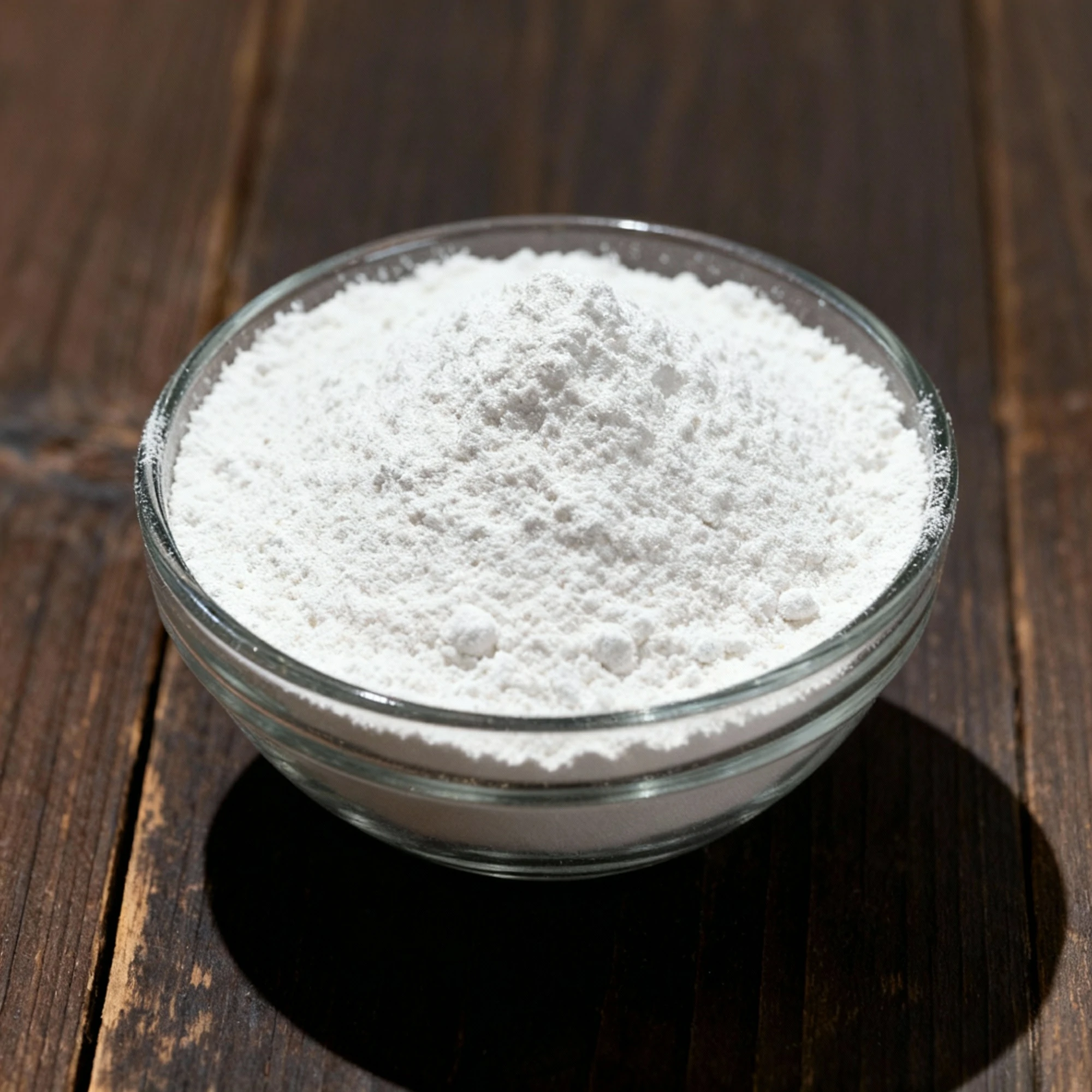

Calcium Citrate
One unit of:25kg/bag
Product Info
What is Calcium Citrate?
Calcium citrate is a white, odorless calcium salt of citric acid used primarily as a dietary supplement for calcium and as a food additive for firming, stabilizing, and $ ext{pH}$ control.
How is Calcium Citrate made?
| Step No. | Production Stage | Key Action | Control Point & Note |
|---|---|---|---|
| 1 | Raw Material Preparation | Prepare a food-grade citric acid solution by dissolving it in purified water. Separately, prepare a slurry of a calcium source, typically high-purity calcium carbonate or calcium hydroxide. | Note: All raw materials must be of food-grade quality. The concentration of the citric acid solution is a key parameter for reaction efficiency. |
| 2 | Neutralization Reaction | Slowly add the calcium source slurry to the citric acid solution in an agitated reactor vessel. The reaction forms an insoluble precipitate of calcium citrate. | Control Point: Monitor and control the temperature and pH of the reaction. The pH should reach a target endpoint (e.g., 7.0-8.5) to ensure complete neutralization. The rate of addition is critical to manage foaming (CO₂ release) and heat generation. |
| 3 | Filtration & Washing | Filter the resulting slurry to separate the solid calcium citrate precipitate from the liquid phase (mother liquor). The separated solid (filter cake) is then washed with purified water. | Control Point: The washing step is crucial to remove any unreacted raw materials and soluble impurities. The purity of the final wash water is monitored to confirm cleanliness. |
| 4 | Drying | Transfer the washed filter cake to an industrial dryer (e.g., a fluid bed or spray dryer) to reduce its moisture content to a specified level. | Control Point: The drying temperature and duration must be carefully controlled to prevent thermal degradation of the product and to achieve the target final moisture content. |
| 5 | Milling & Sieving | Mill the dried calcium citrate to break up any lumps and achieve a fine powder. Sieve the milled product to ensure a consistent and specified particle size distribution. | Control Point: The sieve mesh size is critical for meeting customer specifications for texture, solubility, and flowability. Metal detection is often performed at this stage. |
| 6 | Quality Control & Packaging | Take a final sample of the sieved powder for comprehensive quality control analysis. Upon approval, package the calcium citrate into sealed, food-grade bags or containers. | Control Point: Final testing confirms product identity, purity (assay), absence of heavy metals, and microbiological safety. Packaging must be done in a controlled, low-humidity environment to prevent moisture uptake. |
Technical Specifications
| CAS Number | 7693-13-2 |
| Chemical Formula | C₁₂H₁₀Ca₃O₁₄ |
| Solubility | slightly soluble in water; insoluble in alcohol |
| Storage Conditions | store in a dry, cool, ventilated place |
| Shelf Life | 36 Months |
Applications & Usage
Common Applications:
Mechanism of action:
| Parameter | Calcium Citrate |
|---|---|
| Functional Category | Firming Agent; pH Regulator; Sequestrant; Nutrient Source |
| Key Ingredients | Calcium Citrate (Tricalcium dicitrate) |
| Mechanism of Action | Provides calcium ions (Ca²⁺) which form ionic cross-links with pectic substances (e.g., in plant tissues), reinforcing cell wall structure. Acts as a buffer to stabilize system pH. The citrate component chelates pro-oxidant metal ions, preventing them from catalyzing degradative reactions. |
| Application Effect in Product | Maintains firmness and texture in canned fruits and vegetables, preventing mushiness. Stabilizes pH in dairy products and confections. Used as a bioavailable calcium fortificant in beverages, cereals, and supplements. Enhances gel strength when used with gelling agents. |
Comparison:
| Product Name | Category/Type | Key Features | Strengths (vs peers) | Weaknesses (vs peers) | Best Use Cases | Why Choose |
|---|---|---|---|---|---|---|
| Calcium Citrate | Calcium Supplement | 21% elemental calcium; chelated form. | Best absorption; can be taken with or without food; less likely to cause gas or constipation. | Lower elemental calcium by weight (requires more pills); more expensive. | Individuals with low stomach acid (older adults, users of acid blockers), sensitive digestive systems. | For superior absorption and flexibility in timing, especially if other forms cause side effects. |
| Calcium Carbonate | Calcium Supplement | 40% elemental calcium; inorganic salt. | Highest elemental calcium concentration; most inexpensive and widely available. | Requires stomach acid for absorption (must be taken with food); may cause constipation and bloating. | General use for healthy individuals seeking a cost-effective supplement. | For the highest dose of calcium per pill at the lowest cost, provided you take it with meals. |
| Calcium Gluconate | Calcium Supplement | 9% elemental calcium; organic salt. | Very gentle on the stomach; often used in intravenous medical applications. | Very low elemental calcium content, requiring a large number of tablets for a standard dose. | Low-dose supplementation or for individuals who cannot tolerate other forms at all. | If seeking the gentlest, lowest-potency option and dosage requirements are minimal. |
| Coral Calcium | Calcium Supplement | Primarily calcium carbonate with trace minerals. | Marketed as a natural, easily absorbed source containing trace minerals like magnesium. | Expensive; scientific evidence for superior benefits is lacking; potential for environmental contaminants (e.g., heavy metals). | Consumers who prefer supplements from natural sources and are willing to pay a premium. | If you prioritize a 'natural' source with trace minerals over cost and proven efficacy differences. |
Technical Documents
Available Documentation
spec sheets and monographs available
Safety Data Sheet (SDS)
MSDS available
Certificate of Analysis (COA)
Quality assurance documentation
Technical Data Sheet
Detailed technical specifications